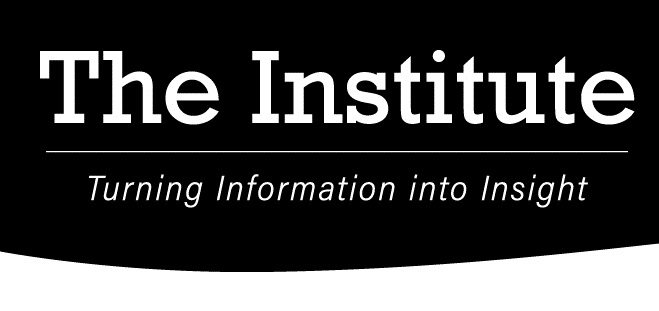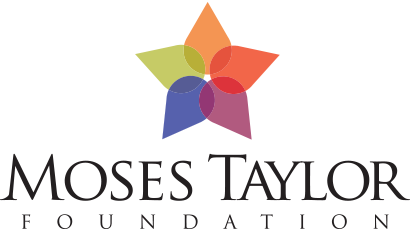Thank You
Thank you to the following organizations for their continued support of our research and this Data Dashboard, which is part of Project STIR (Sparking Transformation using Information & Research).
4-Year Cohort Graduation Rate
The four-year graduation rate measures the proportion of students who enter 9th grade and successfully graduate four years later. Hence, this is a different measure than high school dropout rate because it measures only students who graduate within four years and excludes those who graduate in five or six years. Adjustments are made to account for students moving in and out of each school district.
Statewide, the four-year graduation rate has averaged close to 87 percent from 2016-2017 to 2020-2021. There has not been a clear upward or downward trajectory. The averages of districts in Lackawanna and Wayne Counties experienced decreases in the 2020-2021 school year while Luzerne County’s average saw a slight increase.
The average among school districts in Lackawanna County grew from about 89 percent in 2017-2018 and 2018-2019 to 92 percent in 2019-2020, before falling back to 90.5 percent in the most recent data – still higher than most prior years analyzed. Scranton School District saw substantial improvement in their graduation rates from 2016-2017 (79 percent) to 2020-2021 (87 percent)
Wayne County’s graduation rate rose from 91 percent in 2018-2019 to 95 percent in 2019-2020. It then decreased to 91 percent in 2020-2021, near levels seen before the pandemic. The three districts in Wayne County have typically been within a close range of each other in this measure.
Luzerne County’s graduate rate has experienced an upward trend since the 2017-2018 school year, including a slight increase in 2020-2021. Recent gains have been noted in several districts, with Lake-Lehman, Northwest Area, and Wyoming Area reaching the highest level among years analyzed, though Wilkes-Barre Area’s rate declined to 80 percent.
4-Year Cohort Graduation Rate: Lackawanna County
Source : Pennsylvania Department of Education
4-Year Cohort Graduation Rate: Luzerne County
Source : Pennsylvania Department of Education
4-Year Cohort Graduation Rate: Wayne County
Source : Pennsylvania Department of Education
4-Year Cohort Graduation Rate
Source : Pennsylvania Department of Education
Enrollment
In Lackawanna County, public school enrollment compared to nonpublic schools is lower in 2021-2022 (62 percent) compared to the 2017-2018 school year (89 percent), while Luzerne County’s 2021-2022 public school enrollment (90 percent) is slightly higher than it was in 2017-2018 (90 percent). Wayne County’s 2021-2022 public school enrollment (94 percent) has experienced a drop since the 2017-2018 school year (95 percent). Statewide, the ratio of public to nonpublic enrollment has not changed significantly over the period analyzed.
The total number of students enrolled in public schools increased in Lackawanna and Luzerne Counties in 2021-2022 but fell slightly in Wayne County and statewide.
Percent Public School Enrollment
Source : Pennsylvania Department of Education
Percent Private/Non-Public School Enrollment
Source : Pennsylvania Department of Education
Public School Enrollment
Source : Pennsylvania Department of Education
Career and Technical Education
An important role of education is to equip students with the practical skills that will help them excel in their careers. Career and Technology Centers (CTCs) present an opportunity for students to study career-based curriculums. CTC programs can include traditional trades as well as health care, information systems, cosmetology, and more. These tables show the numbers of high school students enrolled, by sending school district, in programs at partnering Career and Technology Centers. Wayne County is one of the few counties in Northeastern Pennsylvania without its own Career and Technical Education Center.
As of 2022, there were 755 students from Lackawanna County school districts, 1,834 students from Luzerne County school districts, and ten students from Wayne County school districts participating in CTC programs. Data was incomplete for the prior years, but where historical data is available, there have generally been small year-over-year changes in CTC enrollment – with the exception Hazleton Area, where enrollment grew significantly between 2018 and 2020 before dropping in 2022.
For the 2021-2022 school year, competency on the NOCTI assessment, which are standardized assessments for measuring industry-based skills, ranged from 37 percent to 80 percent among the region’s CTCs, while the percentage earning industry credentials ranged from 20 percent to 100 percent. An even greater range was seen in the percentage completing work-based learning experiences, from six percent in in Wilkes-Barre Area to 100 percent at West Side CTC. These statistics may be subject to fluctuation in part due to variations in the types of career programs offered by the CTCs, and relatively small population sizes of students. Compared to the 2019-2020 school year, Wilkes-Barre Area saw declines in each of these metrics, while West Side CTC saw improvements in each. Hazleton Area and Lackawanna each saw a mix of increases and decreases since 2019-2020.
CTC Enrollment
Source : Future Ready PA Index
CTE/CTC Competency Assessments: 2021-2022
Source : Future Ready PA Index
CTE/CTC Competency Assessments: 2019-2020
Source : Future Ready PA Index
Rigorous Courses of Study
In accordance with Future Ready PA standards, participation in rigorous courses was measured by the percentage of students participating in AP/IB coursework, and the percentage of students enrolling in college coursework during high school. AP/IB course participation during the 2021-2022 school year ranged from zero percent to 55 percent in several districts. The average among all districts in the region was around 29 percent. There has been little change in the average rate of AP/IB participation.
College course enrollment ranged from zero percent to just over 81 percent. The Luzerne County district average was 15 percent, the average among Lackawanna County districts was 27 percent, and the Wayne County average was 79 percent. For Lackawanna County, college course enrollment is still significantly lower than it was during the 2019-2020 school year. Wayne and Luzerne Counties saw their averages increase.
Rigorous Courses of Study
Source : Pennsylvania Department of Education
Charter School Enrollment
In 2022, there were 1,701 students enrolled in charter schools from Lackawanna County and 2,216 enrolled in Luzerne County. Wayne County reported 329 students enrolled in charter schools. Compared with the previous year in Lackawanna County, this was a decrease of eight percent. Luzerne County experienced a seven-percent decrease. Although both Lackawanna and Luzerne Counties experienced slight decreases, charter school enrollments in both Lackawanna and Luzerne Counties are significantly higher than they were in 2017.
Charter School Enrollment
Source : Future Ready PA Index
School Assessment
Individual student growth has been measured using PVAAS – the Pennsylvania Value-Added Assessment System. The Average Growth Index (AGI) is a measure of students’ improvement in scores on the PSSA and Keystone Exams. Higher AGI values indicate higher levels of confidence that student growth meets or exceeds state standards. Unlike examining achievement scores, the growth scores show to what degree individual students’ progress over time, rather than how well students perform on a test in a particular year. This data was not collected for 2020 or 2021 as a result of school disruptions precipitated by the pandemic.
Lackawanna County’s 2022 averages were positive in all categories except Algebra 11. The positive categories included Math 4-8, Reading 4-8, Literature 11, and Biology 11. However, there was a range of scores between districts. Dunmore recorded negative scores in each subject, while Abington Heights saw at least a +3.0 in each subject.
In Luzerne County, the only negative growth area was Biology 11. There were positive growth areas in Math 4-8, Reading 4-8, Literature 11, and Algebra 11. There were again large differences between districts; Hazleton Area saw particularly notable positive growth cross each subject.
In Wayne County for 2022, there was improvement in Literature 11, Algebra 11, and Biology. Wayne County’s districts together experienced negative growth in Math 4-8 and Reading 4-8. In the year of data available, Wayne Highlands saw positive change in each area, while the other two districts saw more mixed results.
PVAAS Average Growth Index
Source: PVAAS
Education Employment
The most recent education employment data available covers the 2020-2021 school year. At that time, public school districts in Lackawanna County employed 2,256 people, Luzerne County districts employed 3,061 people, and Wayne County districts employed 460 people. Eighty-six percent of professional personnel in Lackawanna and Luzerne Counties were classroom teachers, compared to 79 percent in Wayne County. Relatively small increases and decreases in staff were seen in each county from 2019-2020 to the 2020-2021 school year. Lackawanna County experienced an overall increase of two classroom teachers, while Luzerne County lost 53 classroom teachers. Wayne County districts together gained 22 classroom teachers.
Education Employment: Lackawanna County
Source : Pennsylvania Department of Education
Education Employment: Luzerne County
Source : Pennsylvania Department of Education
Education Employment: Wayne County
Source : Pennsylvania Department of Education
Special Education Enrollments
Special education data is collected at the Intermediate Unit Level. The Northeastern Educational Intermediate Unit 19 includes Lackawanna, Susquehanna, and Wayne Counties. The Luzerne Intermediate Unit 18 includes Luzerne and Wyoming Counties. The 2020-2021 school year data is the most recent available.
Both intermediate units had significantly higher overall numbers of students enrolled in special education compared with the 2001-2002 and 2011-2012 school years. Furthermore, both areas have generally experienced increasing trends in special education enrollments in more recent years, though 2020-2021 marked the first decrease in several years in both units. Nonetheless, 2020-2021 enrollment in NEIU 19 increased 28 percent compared with the 2001-2002 period, and enrollment in Luzerne IU 18 grew 71 percent in that same time.
Students with specific learning disabilities, other health impairments, and speech and language impairments comprise the largest shares of special education enrollments in the counties. The numbers of students in the categories for autism spectrum disorders exhibited continued to grow in recent years, with a 25-percent increase in NIEU 19 and a 35-percent increase in Luzerne IU 18 compared to 2016-2017.
Special Education Enrollments: 2001-2002
Special Education Enrollments: 2011-2012
Special Education Enrollments: 2016-2017
Special Education Enrollments: 2017-2018
Special Education Enrollments: 2018-2019
Special Education Enrollments: 2019-2020
Special Education Enrollments: 2020-2021
Source : Pennsylvania Department of Education. Prior year totals have been revised.
Data is for Northeastern Educational Intermediate Unit 19 (Lackawanna, Susquehanna, and Wayne counties) and Luzerne Intermediate Unit 18 (Luzerne and Wyoming counties).
* School Districts reporting less than or equal to 10 .These numbers are not reported individually for the counties but are included in the total.
Public School Dropouts
The number of dropouts in the Lackawanna County and Luzerne County region has fluctuated considerably over the last decade. Following a peak in the number of dropouts in both Lackawanna and Luzerne Counties in 2016-2017, totals have generally declined. As of the 2020-2021 school year, dropout totals fell considerably below the ten-year averages for both counties. Wayne County has seen little significant change in the number of dropouts in the last several years.
Public School Dropouts
Source : PA Department of Education
Higher Education
Associate’s Degree
As of 2021, the proportions of residents age 25 and older with an associate’s degree as their highest level of educational attainment were 11 percent for Lackawanna County, 10 percent for Luzerne County, and nine percent for Wayne County. There has been significant growth in associate’s degree holders since 2000 in all three counties and in Pennsylvania, with the statewide statistic reaching nine percent. Both Lackawanna and Luzerne Counties have typically had larger shares of adults with an associate’s degree as their highest level of education compared to Pennsylvania as a whole, and Wayne County is in line with the state percentage.
Bachelor’s Degree or Higher
In Lackawanna and Luzerne Counties, the percentages of populations holding a bachelor’s degree or higher has increased significantly from 2000 and 2010. Pennsylvania has also seen growth in this area, rising from 22 percent in 2000 to 27 percent in 2010 and to a new high of 34.5 percent in 2021. In contrast to those with associate’s degrees, the proportions of adults with bachelor’s degrees are lower in Lackawanna, Luzerne, and Wayne Counties than in Pennsylvania as a whole. The relative gap between regional bachelor’s degree attainment and the statewide share has been largely unchanged in Lackawanna and Luzerne Counties, which had rates 12 percent and 25 percent lower than the statewide rate, respectively. On the other hand, Wayne County’s attainment of bachelor’s degree grew more slowly than the statewide share, falling from 34 percent below the statewide rate in 2010 to 43 percent below the statewide rate in 2021.
Degree Completions
In the 2020-2021 academic year, institutions in Lackawanna County awarded a greater number of certificates (3,683) than Luzerne County (3,502). These numbers represent a near two-percent increase in Lackawanna County and a near 12-percent decrease in Luzerne County compared to 2019-2020.
A total of 7,185 degrees were awarded across the two-county region, including 1,782 certificates and two-year degrees, 3,066 four-year degrees, and 2,337 postgraduate degrees. The greatest number of degrees conferred were for registered nursing (521completions), general business administration and management (421), and accounting (289 completions). Certificates and two-year credentials were most commonly awarded in liberal arts and sciences, licensed practical nursing, registered nursing, and criminal justice. JobsEQ (Chmura Economics) is the source of degree completions data.
Percent of Population 25 Years and Over: Associate’s Degree
Source : U.S. Census Bureau
Percent of Population 25 Years and Over: Bachelor’s Degree or Higher
Source : U.S. Census Bureau
Student – Teacher Ratios
The student-teacher ratio is calculated by dividing the number of students enrolled in a district by the number of teachers employed in the district. The ratio can correlate with a district’s performance; research has shown that students in schools with smaller class sizes receive more individualized attention and therefore tend to perform better on average. It is not a perfect predictor of educational quality or outcomes, however.
In Lackawanna County, 2021-2022 student-teacher ratios ranged from 13 in both the Lakeland and Old Forge School Districts to more than 16 in the Mid Valley School District. In Luzerne County, 2021-2022 student-teacher ratios ranged from 12.5 in Northwest Area to 18.5 in Greater Nanticoke Area. In both counties, 2021-2022 student teacher ratios were at or near their lowest levels among years analyzed.
Prior year data for Wayne County was not available for comparison, but ratios were lower than those observed in Lackawanna and Luzerne Counties. They did not exceed 12.
Lackawanna County Student – Teacher Ratios
Source: National Center for Education Statistics
Luzerne County Student – Teacher Ratios
Source: National Center for Education Statistics
Wayne County Student – Teacher Ratios
Source: National Center for Education Statistics
Publicly Funded Pre-K Enrollments – Children Ages 3-4 Served
No enrollment data for publicly-funded Pre-K was available for inclusion in the report after the 2018- 2019 academic year. Data has also been unavailable for the 2017-2018 school year. As of the 2018-2019 school year, 26 percent of children aged three or four in both Lackawanna and Luzerne Counties were served by the publicly-funded early childhood education programs listed. In Luzerne County, participation in publicly-funded Pre-K was at the highest level on record. This trend was driven by growth in Pre-K Counts, Head Start Supplemental Assistance Program, and Child Care Works programs. Lackawanna County suffered a significant decrease in children served. This is due to a near complete elimination of school district pre-K enrollment, according to data published by KidsCount Data Center. Wayne County has also experienced a decrease in publicly-funded Pre-K enrollments from the 2016-2017 school year to the 2018-2019 academic period. Most recently, almost 21 percent of children aged three to four were served.
Publicly Funded Pre-K Enrollments
Source: Kids Count Data Center








 Sarah, a former Institute intern, joined The Institute in April 2021 as a Research Assistant. She started her new role as a Research Analyst in January 2024.
Sarah, a former Institute intern, joined The Institute in April 2021 as a Research Assistant. She started her new role as a Research Analyst in January 2024. 

 Jill Avery-Stoss joined The Institute in June 2018 to fill the newly-created role of Research, Data, Intern & Administrative Coordinator. She assists with the collection and management of data for purposes of ethical and efficient analysis. She visits partner campuses to market The Institute’s internship opportunities, and participates in event-planning logistical activities as well. In 2021, Jill was promoted to Director of Operations to reflect the diversity in her job description and the additional marketing and communication functions she successfully mastered in 2020. In 2022, Jill was named Chief Operating Officer after expanding into both research and administrative management functions. Jill is taking on project management, fundraising, and other executive leadership functions of the organization.
Jill Avery-Stoss joined The Institute in June 2018 to fill the newly-created role of Research, Data, Intern & Administrative Coordinator. She assists with the collection and management of data for purposes of ethical and efficient analysis. She visits partner campuses to market The Institute’s internship opportunities, and participates in event-planning logistical activities as well. In 2021, Jill was promoted to Director of Operations to reflect the diversity in her job description and the additional marketing and communication functions she successfully mastered in 2020. In 2022, Jill was named Chief Operating Officer after expanding into both research and administrative management functions. Jill is taking on project management, fundraising, and other executive leadership functions of the organization. Ooms is responsible for all facets of research, organizational strategy, and management. Ooms is an active principal investigator in all Institute research. Ooms has been nationally recognized as a leader in regional economic development. She turned that skill into a research institute to help other regions develop and prosper. Her strategic skills have allowed The Institute to expand its services to the private and non-profit sectors for research and analysis in community health needs assessments, strategic planning, market and feasibility studies, and economic impact analysis.
Ooms is responsible for all facets of research, organizational strategy, and management. Ooms is an active principal investigator in all Institute research. Ooms has been nationally recognized as a leader in regional economic development. She turned that skill into a research institute to help other regions develop and prosper. Her strategic skills have allowed The Institute to expand its services to the private and non-profit sectors for research and analysis in community health needs assessments, strategic planning, market and feasibility studies, and economic impact analysis.